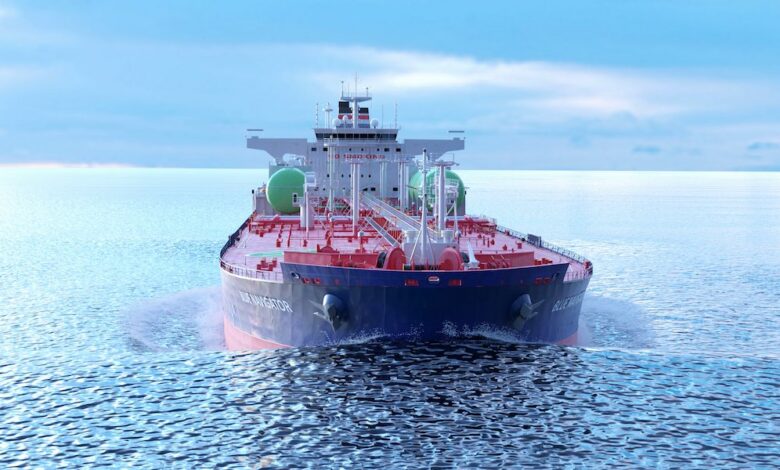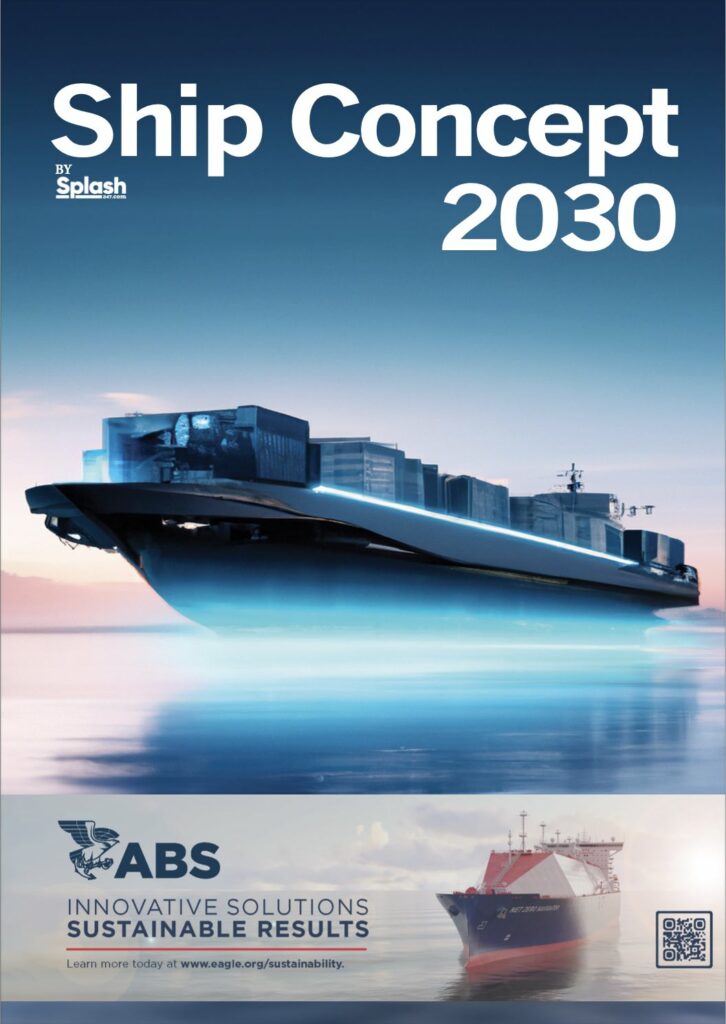Ship Concept 2030: Identifying what tomorrow’s newbuilds will look like

Ship Concept 2030 is the latest magazine out of the Splash Special Reports stable, a publication designed to give readers a glimpse of what is realistic for newbuilds coming out of yards seven years from now taking into account regulations, fuels, information technology, seafaring skills, shipyards and charterers – a unique magazine with the big picture beyond the hype. Writing exclusively for Splash, Dr Roar Adland, global head of research at SSY, and Dr Tristan Smith, reader at UCL Energy Institute, set the scene in this introduction to Ship Concept 2030.
Just what will ships look like come 2030? How will they be different to newbuilds coming out of yards today, and just how does the evolving regulatory landscape affect the outcome? To answer this, we first need to take a stab at how global regulations will evolve by the end of the decade. While there were many critical voices after the International Maritime Organization (IMO) Marine Environmental Protection Committee 80 meeting in July, the IMO discussions do set a large part of the landscape determining the competitiveness and viability of different ship designs. The meeting agreed significant greenhouse gas (GHG) targets – striving for 30% and 80% well-to-wake reductions by 2030 and 2040, respectively. When translated into GHG intensities (i.e. the reductions for the average ship), these targets correspond to about a 55-61% reduction by 2030 and 86-91% by 2040. However, the chosen baseline of 2008 – a peak year for most freight markets and, hence, vessel speeds – means that good progress has already been made towards those targets, of around 30-40% reduction in GHG intensity depending on the ship type.
Now that the low-hanging fruit has been picked, the 2030 challenge is clear – to find significant further efficiency improvements across all ships, but particularly newbuildings, and to be able to operate whilst rapidly phasing out the use of fossil fuels.
The incentives
The scenario that might incentivise this, which then informs some of the attractiveness of different fuel, technology and operational choices, is currently unclear. IMO will continue to provide strong intentions but no clear language or guidance to give certainty regarding investment decisions. However, if we learn from the experience of how other policies have been applied it is plausible that by 2030 it will include:
A stronger IMO CII regulation: More effective enforcement, higher stringency, and possibly shifted to focus on efficiency (e.g. J/tnm) rather than merely carbon intensity.
An initially weak but rapidly strengthening IMO GHG fuel standard. This could, for instance, include a mandate to use a progressively lower GHG intensity fuel, albeit starting in 2027-30 at a level of GHG intensity reduction close to current fuels with light enforcement but with commitments for increasing stringency and enforcement action over time.
A global IMO-mandated GHG price – potentially still a low $50-100 and so not closing the price gap to green fuels fully – but with a subsidy system for rewarding those who do use zero and near-zero emission fuels.
Having set the potential regulatory stage – how could this affect ship operation and newbuilding designs?
The design implication is that the industry will be incentivised to maximise energy efficiency for a given transport work, even beyond what pays for itself in fuel savings. However, whilst the need to move away from fossil fuel at some point in the decade will be clear, the optimum time to switch through the lower GHG fuel options (biofuels, ‘blue’ fuels, blends) to your ultimate zero emission molecule will likely not be anytime soon.
Future proofing
A couple of developments are fairly certain – and represent trends that are already gathering pace. First, we expect to see the return of wind-assisted propulsion to improve energy efficiency and help comply with a stricter future CII scheme. This will of course be more relevant for some vessel types (e.g. tankers) and trades than others, and so we might see a greater geographical specialisation of such tonnage.
Secondly, until a clear zero-carbon fuel winner emerges from the race, for the next few years will still see newbuilding designs with a focus on technological optionality and ‘future proofing’ – multi-fuel engines, strengthened decks for fuel tanks, fully automated or remotely operated engine rooms, etc. Additionally, designs will increasingly include minor tweaks that improve energy efficiency, such as more advanced waste heat recovery and integrated energy management systems (i.e. across electricity, heat and mechanical power consumers). We also expect to see significantly increased electrification, with the use of batteries and hybrid generator solutions.
Ammonia
The good news is that by 2030 we will almost certainly know the answer to the biggest question holding back real progress towards shipping decarbonisation: Can the safety concerns surrounding ammonia as a ship fuel be addressed to the satisfaction of international regulators, seafarers and the general public?
From a purely economic point of view, few would disagree that ammonia is the frontrunner: The production of sufficiently cheap hydrogen is the constraint for all alternative fuels, but all green fuels except ammonia are subject to the additional cost and constraint of carbon extraction.
The need for access to enough cheap renewable energy for green fuel production combined with safety precautions could potentially force changes in terms of bunkering operations for the global fleet. Naturally, zero-carbon fuels should be produced where conditions for renewable energy production (solar and wind) are optimal. Promising locations happen to be near the key existing global trade routes, sparsely populated and with relatively small local markets for energy – Mauritania, Djibouti and West Australia being good examples. While both ammonia and other synthetic green fuels can be readily transported to current bunkering hubs such as Singapore and Rotterdam, safety concerns may in any case lead to bunkering operations for the global fleet being moved further away from highly populated areas.
Safety concerns may also lead to more visible changes in newbuilding designs, such as a return to the forward- or mid-ship-based superstructures of pre-war cargo vessels to clearly separate living quarters from fuel systems and engine room, with the latter being fully automated. Some proponents of unmanned vessels have already raised the toxicity of alternative fuels as a reason to accelerate the development of fully autonomous ships, though we see that as exchanging one set of challenges for entirely new ones.
Further changes to propulsion and emission abatement technology would be highly interrelated with the path of future regulations. For instance, the potential for much more stringent global NOx regulations and, crucially – the IMO also targeting the much more potent greenhouse gases such as nitrous oxide (N2O) in addition to CO2 – could force the phasing out of combustion ship engines in 2030 newbuilds and introduce fuel cells as the most competitive technology with their higher efficiency and low-temperature operation.
While the challenges and uncertainties are many, these changes also represent massive opportunities for global shipping and, if maritime history has shown us anything, it is that large shifts in the global energy mix always lead to entirely new ship types, freight markets and trades, and along with it – new fortunes.
Splash readers can access the full 50-page magazine for free by clicking here.

Ship Concept 2030 is sponsored by ABS, click here to read ABS’s 2023 Outlook.
